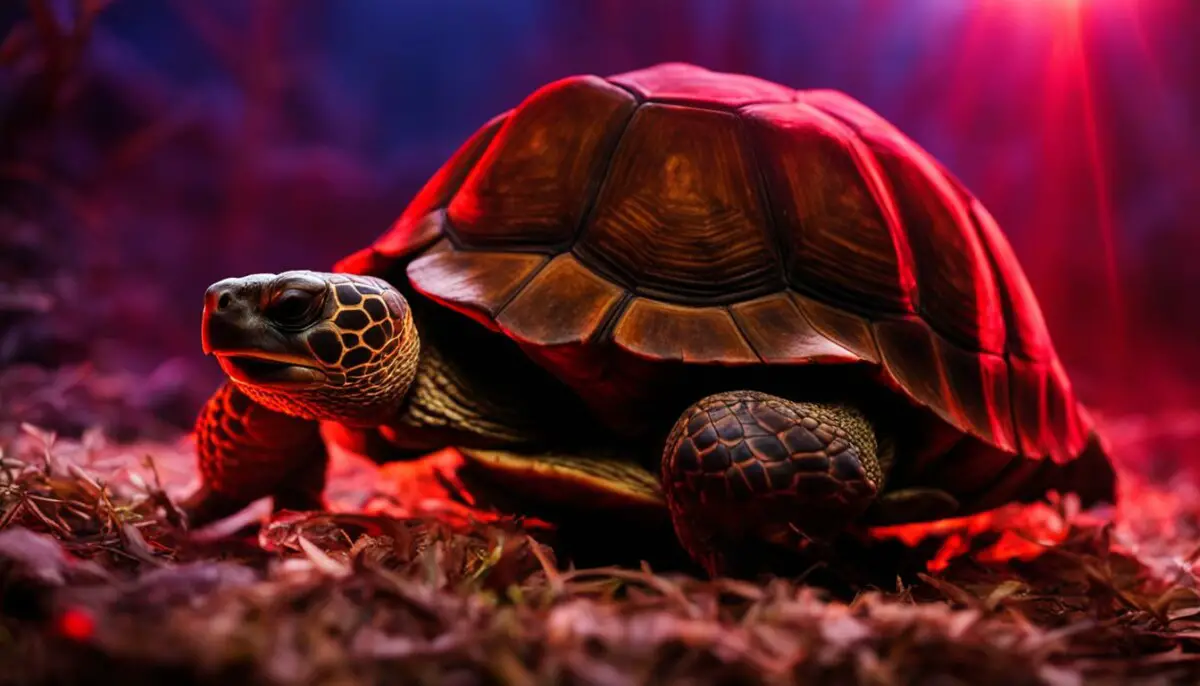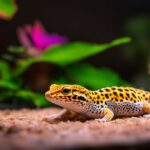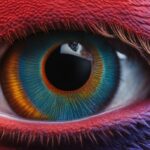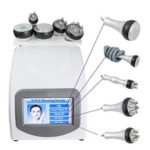Last Updated on 5 months by Francis
Are the red infrared bulbs any good for tortoises? This is a common question among tortoise owners and enthusiasts. In this article, we will delve into the topic and explore the suitability of red infrared bulbs for tortoise care.
Tortoise care can be a complex and nuanced subject, with conflicting advice often provided by reptile shops. One key aspect of tortoise care is maintaining appropriate temperatures in the enclosure. While red infrared bulbs may provide warmth, they may not fulfill the tortoise’s natural lighting needs. It is crucial to provide a suitable substrate and a varied diet to ensure the well-being of tortoises.
Contents
Key Takeaways:
- Red infrared bulbs may not be suitable for tortoises’ natural lighting needs.
- Maintaining appropriate temperatures in the tortoise enclosure is essential.
- Providing a suitable substrate and a varied diet is crucial for tortoise health.
- Consulting with reptile experts can help determine the best heat sources for your specific setup.
- Creating a suitable habitat that mimics the natural environment is important for the overall well-being of tortoises.
The Importance of Temperature in Tortoise Care

Maintaining proper temperature is crucial for the health and well-being of tortoises. In order to create a suitable habitat, it is essential to provide a temperature gradient within the enclosure. The warmest spot should be around 32-35°C (90-95°F), mimicking the natural basking behavior of tortoises in the wild. The cooler end of the enclosure should not drop below 20°C (68°F). This temperature range allows tortoises to regulate their body temperature effectively.
While red infrared bulbs may provide warmth, they do not offer the right balance of daylight and darkness that tortoises require. It is important to provide suitable heat sources that fulfill the specific temperature needs of your tortoise species. Tortoises from different regions have different requirements, so it is crucial to research and understand the specific needs of your tortoise in order to ensure their well-being.
When selecting heat sources for your tortoise enclosure, it is recommended to consult with reptile experts or local reptile stores. They can provide guidance on choosing the most suitable heat lamps or other heat sources that will meet the specific needs of your tortoise, ensuring they thrive in their habitat.
The Role of UV Light in Tortoise Health
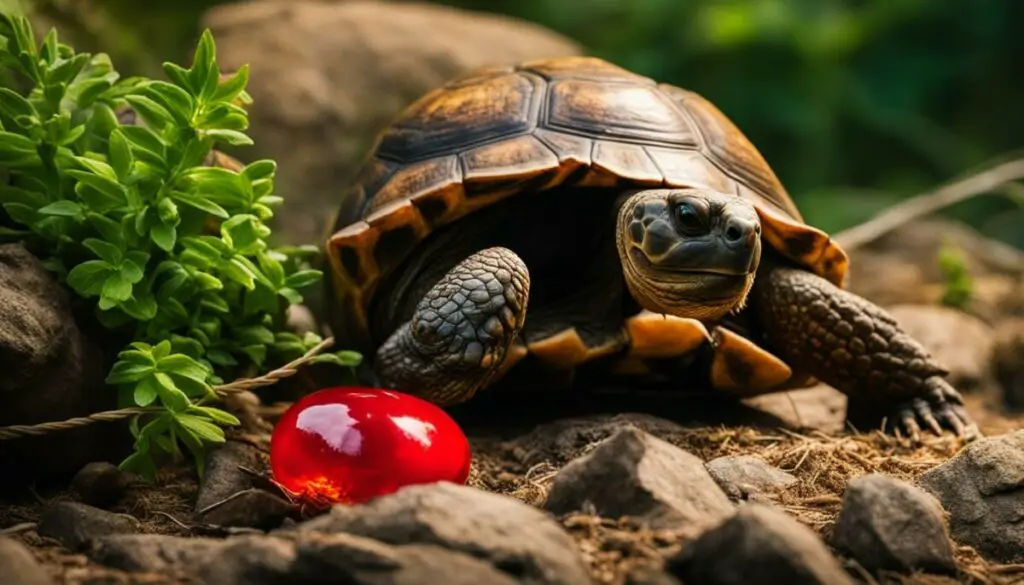
UV light plays a crucial role in the health and well-being of tortoises. It helps them metabolize calcium, which is essential for proper bone development and overall health. While red bulbs may provide warmth, they do not emit UV light, making them inadequate for fulfilling the UV requirements of tortoises.
Tortoises need exposure to both UV-A and UV-B wavelengths, which can be provided by separate UV sources or combination lamps that emit both heat and UV light. It is important to position the UV light source correctly to ensure the tortoise receives adequate UV exposure. A suitable option is a T5 12% tube placed 40-60 cm (15-24 in) from the top of the tortoise’s shell during basking.
To mimic natural sunlight and provide the best possible UV exposure for tortoises, using separate UV light sources or combination lamps that emit both heat and UV light is recommended. This ensures that tortoises receive the necessary UV radiation to support their calcium metabolism and overall health.
| UV Light Requirements for Tortoises | Recommended UV light sources |
|---|---|
| UV-A and UV-B wavelengths for calcium metabolism | Separate UV light sources or combination lamps |
| Positioning of the UV light source | T5 12% tube located 40-60 cm (15-24 in) from the top of the tortoise’s shell during basking |
Providing the appropriate UV light is essential for ensuring the long-term health and well-being of tortoises. By meeting their UV requirements, we can help prevent health issues related to calcium metabolism and support their overall vitality.
Choosing the Right Heat Source for Tortoises

When it comes to creating a suitable habitat for tortoises, selecting the right heat source is crucial. While red bulbs may provide some warmth, they do not fulfill the specific heat and lighting needs of tortoises. It is important to consider alternative options that can provide the necessary heat and light for your tortoise’s enclosure.
Ceramic dull emitters, for example, are a popular choice for heat sources in tortoise habitats. These emitters produce heat without emitting light, allowing tortoises to experience a natural day and night cycle. They also provide a consistent and controlled source of heat, which is essential for maintaining the appropriate temperature gradient within the enclosure.
In addition to selecting a suitable heat source, it is important to provide separate UV sources to meet the tortoise’s UV light requirements. Combination lamps that emit both heat and UV light can also be considered. These lamps mimic the natural sunlight that tortoises would receive in their natural habitats and contribute to their overall health and well-being.
Table: Comparison of Heat Source Options for Tortoises
| Heat Source | Pros | Cons |
|---|---|---|
| Ceramic Dull Emitters | Produce heat without emitting light | May require additional UV light source |
| Combination Heat and UV Lamps | Provide both heat and UV light | Can be more expensive |
| Red Infrared Bulbs | Provide some warmth | Do not emit UV light |
Consultation with a reptile expert or a local reptile store is recommended to determine the best heat source options for your specific tortoise setup. They can provide guidance based on the specific needs of your tortoise species, ensuring that you create a suitable and beneficial habitat for your pet.
Additional Considerations
“It is crucial to consider the natural habitat and behavior of tortoises when selecting a heat source. Red bulbs may provide some heat, but they do not offer the necessary balance of light and darkness that tortoises require to thrive. It is important to prioritize the well-being and health of these unique creatures by providing them with the appropriate heat and light sources.” – Reptile Expert
Remember that tortoises have unique thermal needs, and it’s essential to replicate their natural environment as closely as possible. By choosing the right heat source, you can create an environment that promotes the overall health and well-being of your tortoise.
The Impact of Environment on Tortoise Health
Creating the right environment for your tortoise is essential for ensuring its overall health and well-being. Tortoises have specific temperature and humidity requirements that must be met to mimic their natural habitats. While red infrared bulbs may provide some advantages in terms of heat, they do not fully replicate the natural temperature and lighting conditions that tortoises need.
Tortoises are adapted to specific temperature ranges in their natural habitats, and it is important to maintain these temperatures in captivity. Providing a suitable heat source is crucial, but it must also be able to provide the necessary light spectrum for the tortoise’s well-being. Red bulbs, which emit warm but dark conditions at night, may not fulfill the tortoise’s natural lighting needs.
In addition to temperature and lighting, humidity levels are also important for tortoise health. Some tortoise species require higher humidity levels, while others prefer lower levels. It is important to research the specific requirements of your tortoise species and provide an appropriate humidity level within the enclosure.
Advantages of Infrared Heat Lamps for Tortoises
While red infrared bulbs may have certain benefits, such as providing some heat, they are not the optimal choice for fulfilling all the environmental needs of tortoises. Ceramic dull emitters or other types of heat sources, combined with separate UV sources, can provide a more suitable environment for your tortoise.
By using the appropriate heat source, you can ensure that your tortoise has access to both warm and cool areas within the enclosure. This allows the tortoise to thermoregulate and choose the temperature that suits its needs at any given time.
Remember to consult with a reptile expert or a local reptile store to determine the best options for your specific setup. They can provide guidance on the most appropriate heat source and help you create an environment that promotes the health and well-being of your tortoise.
| Advantages of Infrared Heat Lamps for Tortoises | Disadvantages of Red Infrared Bulbs |
|---|---|
| Provide some heat for tortoises | Do not fulfill the tortoise’s natural lighting needs |
| Can be used to create temperature gradients in the enclosure | Do not emit UV light, which is essential for tortoise health |
| Can be combined with separate UV sources for a complete lighting solution | May not provide the appropriate balance of heat and light that tortoises need |
The Importance of Substrate and Diet for Tortoises

Tortoises, like any other reptile, have specific requirements when it comes to their habitat and diet. The substrate, or the material lining the bottom of their enclosure, plays a crucial role in their overall health and well-being. A suitable substrate should allow for burrowing and provide a comfortable surface for the tortoise to walk on. One commonly recommended substrate for tortoises is fine grade orchid bark. It offers a safe and appropriate option that mimics the natural environment tortoises are accustomed to.
In addition to the substrate, the diet of a tortoise is equally important. A varied and balanced diet consisting of weeds, leaves, grasses, flowers, and opuntia pads is essential for their health. Tortoises are herbivores and require a diet rich in fiber and essential nutrients. It is important to research the specific dietary needs of your tortoise species and provide them with the appropriate food to ensure their well-being.
When considering the habitat and diet of tortoises, it is crucial to note that red infrared bulbs, commonly used for heating, may not contribute to these requirements. While these bulbs can provide some heat, they do not fulfill the substrate and diet needs of tortoises. It is important to provide a suitable heat source that mimics the natural temperature and lighting conditions tortoises need to thrive. Consulting with reptile experts or local reptile stores can help you choose the best heat source for your specific setup.
The Challenges of Artificial Heat and Light Sources for Tortoises
While artificial heat and light sources have proven beneficial in some aspects of tortoise care, there are also potential challenges associated with their use. It is important to understand and address these challenges to ensure the well-being of captive tortoises.
Effect on Behavior and Physiology
The emissions and spectrum of artificial lamps differ from natural sunlight, which can confuse tortoises and affect their behavior and physiological processes. Red infrared bulbs, commonly used as heat sources, may not provide the appropriate balance of heat and light needed for tortoise health. Tortoises rely on a combination of heat and light cues to regulate their daily activities, such as foraging, basking, and seeking shelter. Artificial sources may disrupt these natural behaviors and rhythms, potentially leading to stress, reduced activity, or even aberrant behaviors.
Limitations of Red Infrared Bulbs
Red infrared bulbs, although they provide warmth, do not emit UV light, which is essential for tortoise health and the metabolism of calcium. UV light helps tortoises metabolize calcium, preventing issues like metabolic bone disease. Additionally, red bulbs emit a warm but dark light at night, which may not fulfill the tortoise’s natural lighting needs. Tortoises benefit from experiencing a day-night cycle with appropriate levels of light and darkness. The use of red bulbs alone may not adequately fulfill these requirements.
| Challenges | Impact on Tortoises |
|---|---|
| Inadequate light spectrum | Disruption of natural behavior and physiology |
| Lack of UV light | Potential health issues, like metabolic bone disease |
| Insufficient day-night cycle | Inability to fulfill natural lighting needs |
Creating a Suitable Environment
To mitigate the challenges associated with artificial heat and light sources, it is crucial to create a suitable environment for tortoises. This includes providing a temperature gradient, appropriate substrate, varied diet, and access to UV light. Ceramic dull emitters or other types of heat sources, combined with separate UV sources, are more suitable for fulfilling the specific heat and lighting needs of tortoises. Consulting with reptile experts and actively monitoring the behavior and health of captive tortoises can help ensure their well-being in artificial environments.
Overall, while artificial heat and light sources can provide some benefits, careful attention must be paid to mimic the natural environment and provide suitable heat, lighting, and UV exposure for tortoises. Red infrared bulbs alone may not fulfill the complex thermal and lighting requirements of these reptiles, and it is important to consider alternative heat and light sources in order to create a beneficial and thriving habitat for captive tortoises.
Understanding the Thermal Needs of Tortoises
Tortoises have unique thermal needs and behaviors that must be considered in their captive environments. These reptiles rely on external heat sources to regulate their body temperature and maintain their overall health. It is important to provide suitable heat sources that mimic the natural conditions tortoises experience in their native habitats.
One common misconception is that red heat lamps or infrared bulbs are the best choice for providing heat to tortoises. While these bulbs do emit warmth, they do not offer the necessary balance of heat and light that tortoises require. Infrared bulbs may provide some heat, but they fail to fulfill the lighting needs of tortoises, as they emit a warm but dark spectrum of light.
A well-designed tortoise habitat should include a variety of heat sources that allow the reptiles to thermoregulate effectively. This means providing both warm and cool areas within the enclosure where tortoises can move to adjust their body temperature as needed. Heat sources such as ceramic dull emitters or other types of heat emitters combined with separate UV sources are more suitable for creating a proper thermal gradient for tortoises.
By understanding the thermal needs of tortoises and providing the appropriate heat sources, reptile owners can ensure the well-being and health of their pet. It is crucial to consult with reptile experts or local reptile stores to determine the best options for creating a suitable habitat for your specific tortoise species.
| Pros of Red Heat Lamps | Cons of Red Heat Lamps |
|---|---|
| – Provide some heat to the enclosure | – Do not fulfill the lighting needs of tortoises |
| – Can be used as a supplemental heat source | – Do not provide the necessary balance of heat and light |
| – Can be cost-effective | – Fail to mimic the natural conditions tortoises require |
Note: This table provides a summary of the pros and cons of using red heat lamps for tortoise habitats. While they may offer some benefits, it is important to consider the overall thermal needs and requirements of tortoises to create a suitable and beneficial environment.
The Effects of Artificial Heat and Light Sources on Tortoises
While artificial heat and light sources have proven beneficial in some aspects of tortoise care, it is important to consider the potential effects they may have on these reptiles. Red heat lamps and other types of infrared bulbs are commonly used to provide warmth in tortoise enclosures. However, research and observations have shown that there can be both positive and negative consequences associated with the use of these artificial sources.
One potential negative effect is dehydration. Tortoises rely on the environment to meet their hydration needs, and the use of artificial heat sources can increase the risk of dehydration if the enclosure does not provide adequate humidity or if the tortoise does not have access to fresh water. Additionally, developmental disorders of the skeleton have been observed in tortoises exposed to artificial heat sources in close proximity. The excessive heat emitted by these bulbs can lead to abnormal growth patterns and skeletal deformities in young tortoises.
Changes in keratin hydration status have also been noted in tortoises exposed to artificial heat and light sources. The keratin in the tortoise’s shell and skin plays a critical role in protection and hydration. When exposed to artificial heat, the keratin can become dry and brittle, potentially leading to shell and skin problems. It is important to carefully monitor the tortoise’s shell and skin health when using artificial heat and light sources to ensure that these issues do not arise.
| Positive Effects | Negative Effects |
|---|---|
|
|
While artificial heat and light sources have their benefits, it is crucial to understand and mitigate the potential negative effects they can have on tortoises. Careful monitoring and adjustment of humidity levels, access to fresh water, and regular health checks are essential to maintaining the well-being of these reptiles in artificial environments.
Conclusion
In conclusion, it is important to carefully consider the heat and lighting needs of tortoises when selecting the appropriate heat sources for their enclosure. While red infrared bulbs may provide some heat, they do not fulfill the specific requirements of tortoises in terms of light and UV exposure. Tortoises need UV light to metabolize calcium and maintain proper bone health, which red bulbs do not emit. Therefore, it is recommended to explore other options for tortoise heating lamps.
When creating a suitable habitat for tortoises, it is crucial to replicate their natural environment as closely as possible. This includes providing the right temperature gradient, suitable substrate, and a varied and balanced diet. Red bulbs may not contribute to these requirements, making them less than ideal for tortoise enclosures. Consulting with reptile experts or local reptile stores can help you choose the most suitable heating lamps for your specific setup.
To ensure the well-being of captive tortoises, it is important to mimic their natural behavior and physiological processes. Artificial heat and light sources can have both positive and negative effects on tortoise health. While they can help maintain appropriate temperatures, they may also contribute to health issues if not used correctly. Therefore, careful observation of your tortoise’s behavior and health is crucial to creating a suitable and beneficial habitat.
FAQ
Are red infrared bulbs suitable for tortoises?
No, red infrared bulbs may not be suitable for tortoises due to multiple reasons. They do not fulfill the tortoise’s natural lighting needs and do not emit UV light, which is essential for their health.
What temperature should the tortoise enclosure be maintained at?
The ambient temperature in the tortoise enclosure should not drop below 80 degrees and should rise to the low 90s during the day.
What type of substrate and diet should tortoises have?
Tortoises should have a suitable substrate, such as fine grade orchid bark, and a varied diet consisting of weeds, leaves, grasses, flowers, and opuntia pads.
What is the importance of UV light for tortoises?
UV light is essential for tortoises as it helps them metabolize calcium and maintain proper bone health.
What heat source should be used for tortoise enclosures?
Ceramic dull emitters or other types of heat sources, combined with separate UV sources, are more suitable for providing the necessary heat and light for tortoise enclosures.
What is the impact of artificial heat and light sources on tortoises?
The emissions and spectrum of artificial lamps can affect tortoises’ behavior and physiological processes. Red infrared bulbs may not provide the appropriate balance of heat and light that tortoises need.
How do tortoises regulate their body temperature?
Tortoises regulate their body temperature by basking in the sun and seeking shade.
What are the effects of artificial heat and light sources on tortoise health?
Further research is needed to fully understand the impact of artificial heat and light sources on tortoise health. Dehydration, developmental disorders of the skeleton, and changes in keratin hydration status have been observed in tortoises exposed to artificial heat sources.

